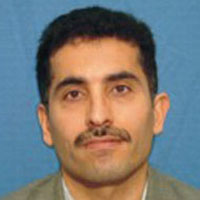Adaptive Control of the 3-Story Benchmark Building Equipped with MR Damper using Fractional Order Robust Controller
The goal of the present research is to propose a novel adaptive fractional order PID (AFOPID) controller whose parameters are tuned online by five exclusive multilayer perceptron (MLP) neural networks using the extended Kalman filter (EKF). An MLP neural network that is trained using the Back Propagation (BP) error algorithm is considered to identify the structural system and estimate the plant. The Jacobian of the model estimated online is utilized to apply to the controller. Considering the adaptive interval type-2 fuzzy neural networks (IT2FNN) and this issue that the compensator is tunned by EKF and feedback error learning strategy (FEL), the stability and robustness of this controller are increased against the estimation error, seismic disturbances, and some unknown nonlinear functions. In order to validate, the performance of the proposed controller is investigated on a 3-story nonlinear benchmark building equipped with semi-active dampers under far and near field earthquakes. In order to evaluate the effectiveness of the proposed controller equipped with a compensator in reducing seismic responses, the evaluation indices were discussed and compared with previous studies. The numerical results represent the substantial efficiency of the proposed adaptive controller (AFOPID) over the previous controllers such that J2 in the Hachinohe and Northridge earthquakes enhanced by up to 35% and more than 40%, respectively. In general, all indices ( J3 to J6 ) have experienced a considerable enhancement using the proposed method.
-
Control of seismic vibrations of a structure with nonlinear behavior using tuned mass and magnetorheological dampers with fuzzy logic algorithm based on velocity and displacement
Sasan Mostaghimi Tehrani, Akbar Bathaei, *
Journal of Vibration and Sound, -
Developing a New Weighted Relative Performance Index to Evaluate Base Isolation Systems in the Seismic Behavior of Structures
M. Bajalan, S.M. Zahrai *
Journal of Structure & Steel,


